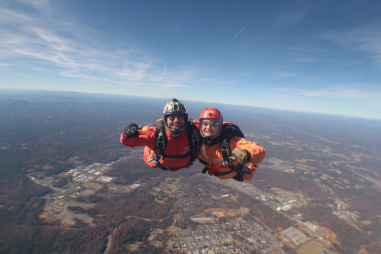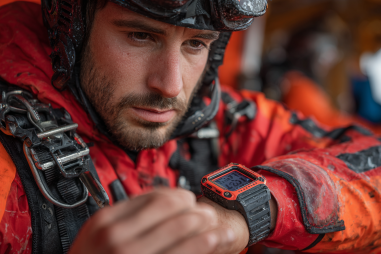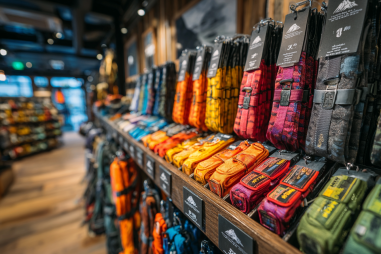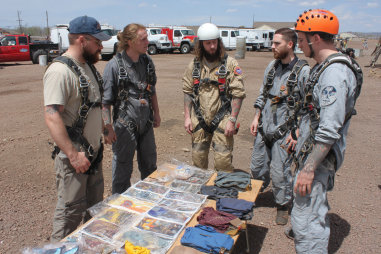Skydiving is an exhilarating sport that offers the unique thrill of freefall and flying through the air. However, before taking the plunge, it’s crucial to understand the certification requirements involved in becoming a licensed skydiver. Certification not only ensures that you have the necessary skills and knowledge to skydive safely but also protects other jumpers and the sport’s integrity. In this guide, we’ll break down what you need to know—from the different certification levels and governing bodies to the medical and legal prerequisites—so you can confidently embark on your skydiving journey.
Overview of Skydiving Certifications
Skydiving certifications serve as formal credentials that demonstrate a jumper’s competence and experience. They are designed to ensure individuals meet specific safety and skill standards before progressing to more advanced jumps. Typically, the certification process includes training, a minimum number of jumps, and evaluations of both practical and theoretical knowledge.
Certification is important not only for personal safety but also for access to a variety of drop zones and events. Many skydiving centers require proof of certification before allowing less experienced jumpers to participate in advanced activities like night jumps or formation skydiving. Overall, certifications play a critical role in maintaining safety standards and fostering a community of responsible skydivers.
Governing Bodies and Certification Levels
Various organizations around the world oversee skydiving certifications, each with their own guidelines and grading systems. In the United States, the United States Parachute Association (USPA) is the primary governing body that issues licenses and sets safety standards. Other countries have their own associations, such as the British Skydiving (formerly BPA) in the UK or the Australian Parachute Federation (APF).
USPA Licensing System
The USPA issues three main levels of skydiving licenses:
- A License: Entry-level certification that allows solo jumping under supervision. Requires a minimum of 25 jumps.
- B License: Intermediate certification enabling the holder to jump without supervision and participate in more complex activities. Requires at least 50 jumps and a stable ability to handle various scenarios.
- C and D Licenses: Advanced certifications requiring more jumps and demonstrated expertise, often involving leadership roles and advanced coaching abilities.
Other countries follow similar tiered systems tailored to their local regulations but usually reflect these same progression benchmarks.
Minimum Jump Counts and Training Hours
Jump counts and training hours are fundamental requirements established by governing bodies to ensure proper skill development. For example, under the USPA system:
- The A License demands completing a minimum of 25 jumps, including specific types such as solo jumps and controlled exits.
- The B License requires 50 jumps, with an emphasis on consistency and varied conditions.
- Advanced C and D licenses demand 200 or more jumps along with thorough training in specialized skydiving disciplines.
Training hours encompass both classroom instruction and practical on-the-ground exercises. These lessons cover equipment familiarization, air traffic rules, emergency procedures, and essential body control techniques for freefall and landing.
Required Skills and Safety Assessments
Certification isn’t merely about logging numbers; it’s about proving proficiency in a range of skills that keep skydivers safe and confident in the air. These skills are evaluated through practical exams and ongoing assessments:
- Body Position and Exit Control: Demonstrating stable freefall posture and controlled aircraft exit techniques.
- Canopy Control: Ensuring safe deployment, maneuverability, and landing accuracy of the parachute.
- Emergency Procedures: Being ready to activate reserve parachutes or respond to malfunctions effectively.
- Altitude Awareness: Accurate use of altimeters and understanding of jump parameters.
- Landing Accuracy: Ability to land in designated drop zones safely.
Safety assessments are performed by qualified instructors who observe jumps and ensure jumpers respond correctly to simulated emergencies and adhere to established protocols. Passing these tests is essential before advancing to new certification levels.
Medical and Legal Requirements
Skydiving is a physically demanding sport, so certain medical and legal requirements must be met before certification.
Medical Fitness
Most certification programs require a medical check to screen for conditions that could pose risks during a jump. This includes issues like heart disease, epilepsy, severe asthma, or any ailments that might compromise consciousness or physical coordination. The USPA, for instance, recommends jumpers consult a physician and complete a health questionnaire. Some countries or drop zones may require a doctor’s certification confirming fitness.
Legal Documentation and Waivers
Before jumping, participants typically sign liability waivers acknowledging the risks involved. They must also adhere to any age restrictions—generally, the minimum age is 18, though with parental consent some programs allow younger jumpers. Additionally, jumpers must follow local aviation laws and regulations, including licensing and drop zone rules.
How to Maintain and Upgrade Certification
Maintaining your certification means staying active, adhering to safety standards, and continually honing your skills. Most governing bodies have ongoing requirements:
- Regular Jumps: Staying certified usually requires making a minimum number of jumps annually to retain currency and proficiency.
- Recurrency Training: Some training refreshers or safety courses may be necessary, especially after a period of inactivity.
- Upgrading License: To move to the next certification level, jumpers must complete additional jumps, demonstrate advanced skills, and pass further evaluations.
Many skydivers also pursue specialty endorsements or instructor ratings to expand their capabilities and contribute to the sport through teaching.
Benefits of Being Certified
Certification unlocks numerous advantages for skydivers. It provides:
- Safety Assurance: Certified skydivers have proven their ability to manage jumps responsibly, reducing risks for themselves and others.
- Access to Facilities: Many drop zones require certification for jumps beyond initial training, including advanced activities like night or tandem jumps.
- Community Inclusion: Being certified connects skydivers to a community of like-minded enthusiasts and access to competitions, coaching, and mentorship.
- Insurance Eligibility: Certification often impacts the availability and cost of insurance for skydiving activities.
- Personal Growth: The stepwise progression encourages skills development, confidence, and respect within the sport.
Ultimately, a certification represents your commitment to skydiving as a serious and prepared sportsperson.
Making Your Certification Journey Successful
Embarking on your skydiving certification journey requires dedication, patience, and a clear understanding of the requirements. Start by selecting a reputable drop zone affiliated with recognized governing bodies such as the USPA. Engage fully with all training modules, listen carefully to instructors, and practice consistently to build confidence in your skills.
Stay physically and mentally prepared by adhering to medical advice and prioritizing your safety. Be proactive in meeting jump counts and learning all safety protocols. Remember that every jump is an opportunity to improve.
Finally, embrace the community and resources available—experienced jumpers, instructors, and certification bodies are invaluable guides who will help ensure your journey is as safe and rewarding as possible. With the right mindset and preparation, you’ll soon enjoy the freedom and exhilaration of certified skydiving.







